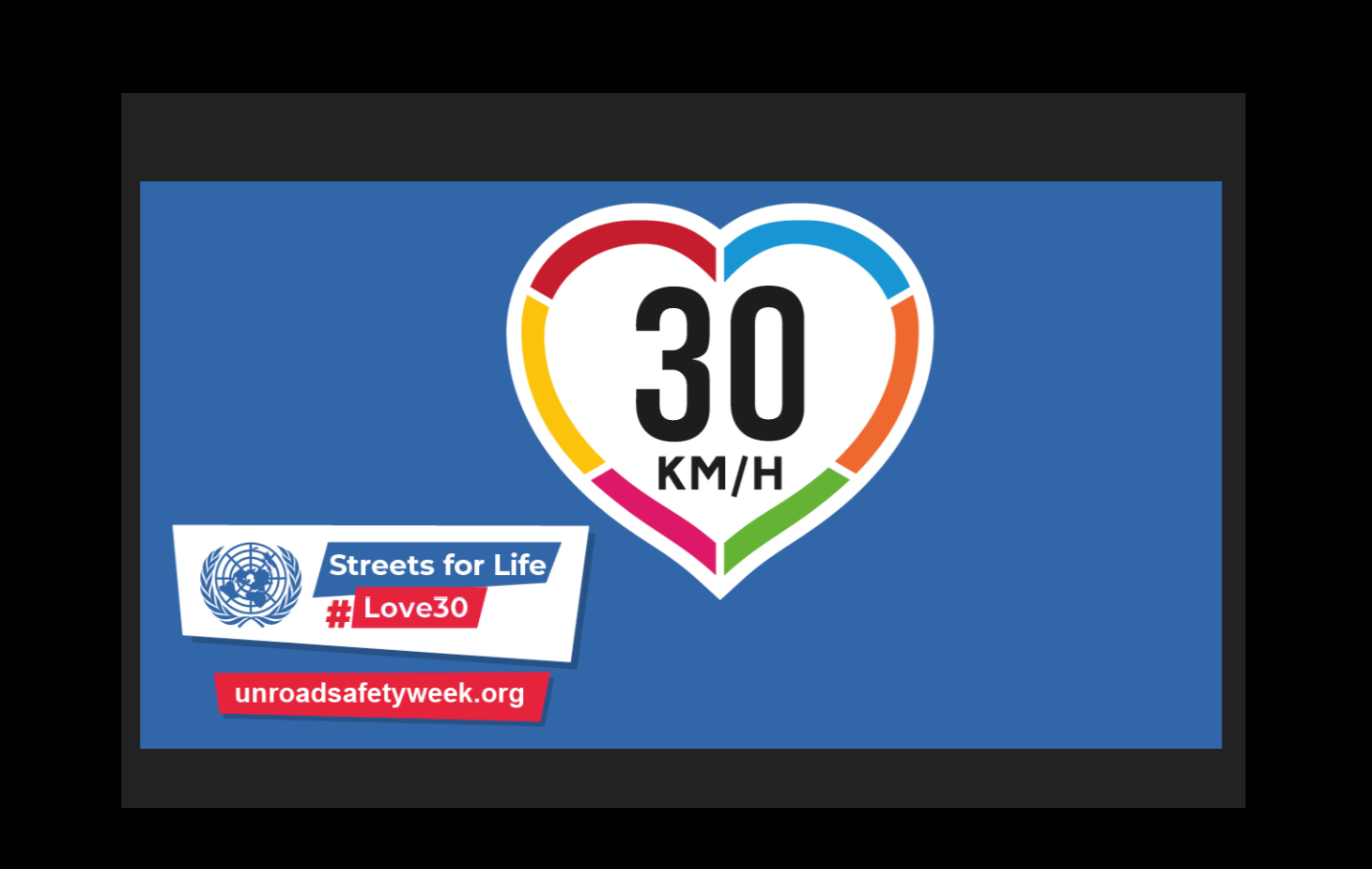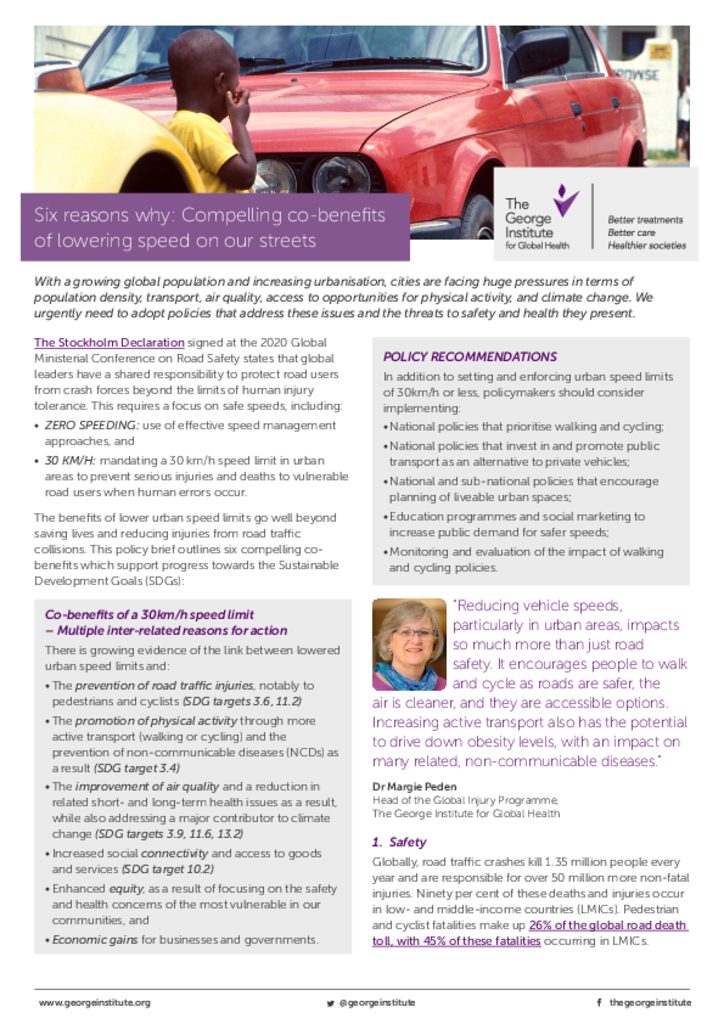
UN Global Road Safety Week: Compelling co-benefits of lowering speed on our streets
To support the 6th UN Global Road Safety Week’s ‘streets for life’ campaign (17-23 May 2021), which calls for 30 km/h (20 mph) urban streets, The George Institute has set out the compelling co-benefits of lowering speeds in ensuring safe, healthy, green and liveable cities.
Every year, more than 1.35 million people die in road traffic crashes, and excessive speed is at the core of the problem. The Decade of Action for Road Safety 2021-2030 plan currently under consultation, and the WHO document Managing speed, outline five actions to make #StreetsforLife:
- Build or modify roads to include features that calm traffic;
- Establish speed limits appropriate to the function of each road;
- Enforce speed limits;
- Install in-vehicle technologies; and
- Raise awareness about the dangers of speeding.
Associate Professor Julie Brown, Program Head of the Injury Division, The George Institute, Australia, said:
“Safe speed is at the heart of a safe-system approach to road safety. In areas shared with pedestrians and cyclists, a safe speed limit of 30 km/h or less ensures the safety of everyone using that area. The risk of a pedestrian dying after being struck by a car increases threefold at impact speeds over 30 km/h, and by more than eight times at impact speeds over 50 km/h.”
With a growing global population and increasing urbanisation, cities are facing huge pressures in terms of population density, transport, air quality, access to opportunities for physical activity, and climate change. The world urgently needs to adopt policies that address these issues and the threats to safety and health they present.
In response, The George Institute has mapped the latest evidence on the benefits of lowering speeds on urban streets, and has identified compelling co-benefits that go well beyond saving lives and reducing injuries from road traffic collisions. These include: the promotion of physical activity; increased social connectivity and access to goods and services; enhanced equity, as a result of focusing on the safety and health concerns of the most vulnerable in our communities; and economic gains for businesses and governments.
Dr Margie Peden, Head of the Global Injury Programme at The George Institute said:
“Reducing vehicle speeds, particularly in urban areas, impacts so much more than just road safety. It encourages people to walk and cycle as roads are safer, the air is cleaner, and they are accessible options. Increasing active transport also has the potential to drive down obesity levels, with an impact on many related, non-communicable diseases.”
Building on these inter-related reasons for action, The George Institute recommends the following policies (in addition to setting and enforcing urban speed limits of 30km/h or less):
- National policies that prioritise walking and cycling;
- National policies that invest in and promote public transport as an alternative to private vehicles;
- National and sub-national policies that encourage planning of liveable urban spaces;
- Education programmes and social marketing to increase public demand for safer speeds;
- Monitoring and evaluation of the impact of walking and cycling policies.
Find the full list of co-benefits, supporting evidence, and policy recommendations in Six Reasons Why. For further information on the UN Global Road Safety Week 2021, please visit the #StreetsforLife campaign website here.








